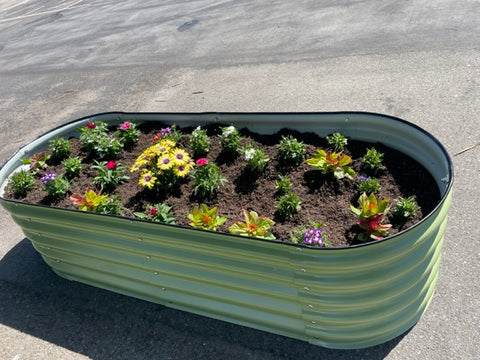Safeguarding Raised Backyard Garden Beds: An Effective Defense against Garden Pests
Raised garden beds have gained popularity among gardening enthusiasts due to their numerous benefits. However, these elevated beds are not impervious to the presence of garden pests that can wreak havoc on plants. This article aims to outline practical strategies for effectively defending your raised garden beds against common pests, ensuring the vitality of your backyard garden.
Understanding the Threat:
1. Identification: Familiarize yourself with common garden pests such as aphids, slugs, snails, beetles, and caterpillars. Recognizing these pests and their characteristics will help you develop targeted defense strategies.
2. Pest Behavior: Study the feeding habits, life cycles, and preferred habitats of garden pests. Understanding their behavior will enable you to implement preventative measures at strategic times.

Preventative Measures:
1. Site Selection:
Sunlight and Soil: Choose a location that offers ample sunlight and well-drained soil, as this discourages many pests.
Distance from Wild Vegetation: Keep raised garden beds away from wild vegetation to minimize the risk of pests spreading from nearby areas.
2.Physical Barriers:
Fencing: Install a sturdy fence around the garden to deter larger pests like rabbits, deer, and groundhogs.
Netting and Row Covers: Use fine mesh netting or row covers to safeguard against flying insects and pests.
3. Companion Planting:
Beneficial Plant Relationships: Employ companion planting techniques to naturally repel pests or attract beneficial insects. For instance, plant marigolds to deter aphids or attract ladybugs that prey on aphids.
Integrated Pest Management (IPM) Strategies:
1.Crop Rotation:
Strategic Plant Rotation: Rotate crops annually to interrupt pest life cycles and prevent the buildup of specific pests targeting particular crops.
2.Organic Pest Control:
Beneficial Insects: Introduce beneficial insects such as ladybugs, lacewings, or praying mantises, which feed on garden pests.
Natural Pest Repellents: Utilize homemade pest repellents like garlic or neem oil spray to deter pests.
Organic Insecticides: Opt for organic insecticides derived from natural substances as a last resort.
3.Watering and Drainage:
Proper Watering: Practice appropriate watering techniques to avoid creating excess moisture, which attracts pests like slugs and snails.
Adequate Drainage: Ensure raised metal garden beds have adequate drainage to prevent waterlogged conditions that favor pests.

Vigilance and Maintenance:
1.Regular Inspections:
Early Detection: Regularly inspect plants for signs of pest damage, such as chewed leaves, wilting, or discoloration.
Prompt Action: Immediately remove infected or infested plants to prevent the spread of pests.
2. Weed Control:
Weed Management: Regularly remove weeds as they provide hiding spots and alternate hosts for pests.
Raised garden beds offer an ideal platform for cultivating thriving plants in your backyard. By adopting a proactive approach to pest management through site selection, physical barriers, companion planting, integrated pest management strategies, and regular maintenance, you can effectively defend your raised planter box against common garden pests. With diligence and care, you can enjoy a bountiful and pest-free garden that adds beauty and sustenance to your outdoor space.
